![The Mohican Board! [Bumppo's Redux!] The Mohican Board! [Bumppo's Redux!]](images/wwwboard.gif) |
|
| Author |
 Topic Topic  |
|
|
James N.
Colonial Militia
   

USA

Bumppo's Patron since [at least]:
October 24 2007
Status: offline
|
 Posted - August 01 2012 : 11:58:16 AM Posted - August 01 2012 : 11:58:16 AM



|
Image Insert:
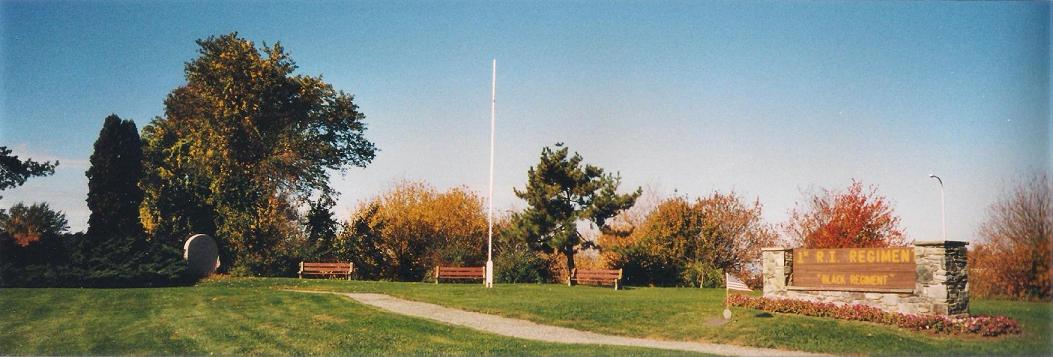
71.43 KB
New ( 1998 ) Park commemorating the heroic actions of the black First Rhode Island Regiment in the Battle of Rhode Island.
One of the lesser-known and potentially most disasterous events to the cause of American freedom was the fiasco known as the Battle of Rhode Island. It occurred mainly on the island itself, which had been occupied by the British in Dec., 1776. The teardrop-shaped island effectively controlls the main ship channel and a secondary one leading into Narragansett Bay; by controlling it and its only town of significance, Newport, a handful of British troops were able to effectively "bottle up" the entire State without having to actually occupy interior places like Providence. The Revolutionaries were unable to mount a campaign to recover the island as long as other more pressing matters demanded their attention, especially the 1777 campaigns of Burgoyne in upstate New York and Howe against Philadelphia. With the capture of Burgoyne's army at Saratoga, things took a decisive turn with France's recognition of the United States and open assistance in the form of arms, troops, and ships. The British, now commanded overall by Sir Henry Clinton, abandoned Philadelphia, retreating across the Jerseys to the safety of their main port at New York harbor. Unable to attack so strong a position but encouraged by his army's recent performance in the Battle of Monmouth, N. J., Washington was finally able to turn his attention to Newport.
Unfortunately for the way things unfolded, Washington, not knowing what Clinton might do, felt he couldn't leave the New York area; in his stead he sent one of his principal subordinates, former lawyer Maj. Gen. John Sullivan of New Hampshire. Sullivan is one of the Revolution's "lesser lights", best known as commander of a division in battles like Trenton, Princeton, and Brandywine ( where he was outflanked and driven from his position ); and as independent commander of the later 1779 expedition against the Iroquois which destroyed their towns and fields but failed to bring them to battle, allowing them to continue their murderous frontier raids. Not noted for his tact, he was a poor choice to cooperate with France's very first military attempt to aid the Americans. Vice Admiral Jean-Baptiste Charles Henri Hector Theodat, Comte d'Estang led a fleet of a dozen warships containing 4,000 additional land troops to New York to assist in Washington's planned attack, but found his huge ships-of-the-line couldn't cross the bar into the harbor! Instead, he sailed for Newport to join forces with Sullivan's Continentals and Rhode Island militia in an attack on the small British garrison of only 3,000 now led by Brig. Gen. Sir Robert Pigot. Together Sullivan and d'Estang could field four times as many men, plus the added weight of the guns of the French fleet!
|
|
report to moderator
|
|
|
James N.
Colonial Militia
   

USA

Bumppo's Patron since [at least]:
October 24 2007
Status: offline
|
 Posted - August 01 2012 : 2:26:40 PM Posted - August 01 2012 : 2:26:40 PM




|
In a simple plan, Sullivan was to cross at the northern tip of the island and capture the British redoubt on Butts Hill, while d'Estang landed his troops farther south; they would then advance jointly on the British in Newport. In preparation, d'Estang first landed his seamen and soldiers who were ill from the long ocean voyage on smaller neighboring Conanicut Island, just across the main channel from the town.
Image Insert:
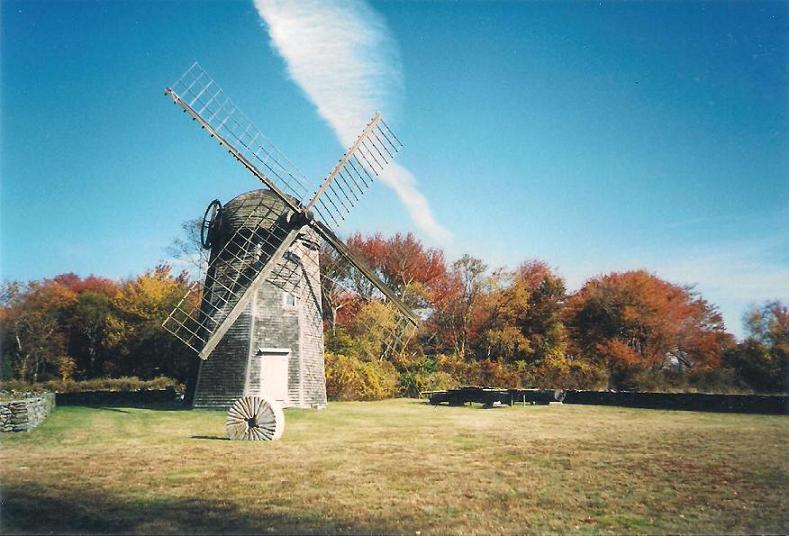
73.99KB
Image Insert:
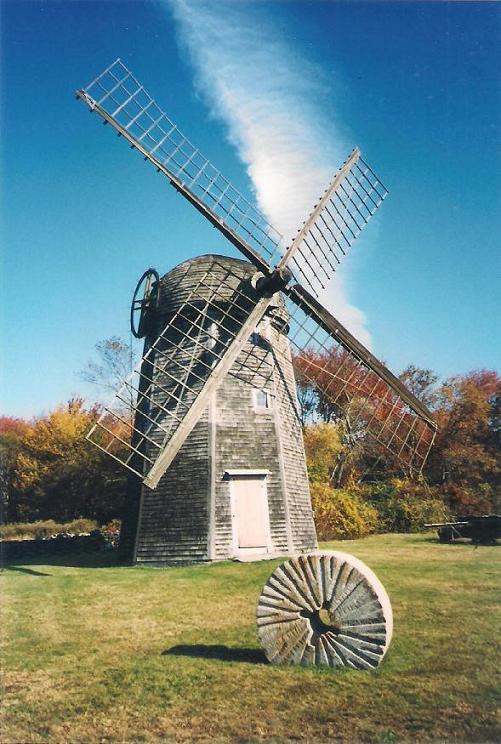
77.78KB
Windmill on Conanicut Island.
As happens so often to military plans, fate interviened: Sullivan crossed successfully and occupied the now-abandoned British fort on Butts Hill, but before d'Estang began his move, a British fleet appeared. Lord Richard Howe, brother of the General, brought thirteen ships to the relief of Newport; d'Estang, not wanting to be trapped in Narragansett Bay, reembarked his recuperating sailors and marines and sailed forth to give battle in the open sea, promising to return. A storm Aug. 11 scattered both fleets: Howe returned to New York and d'Estang made for Boston to repair their damaged vessels.
Image Insert:
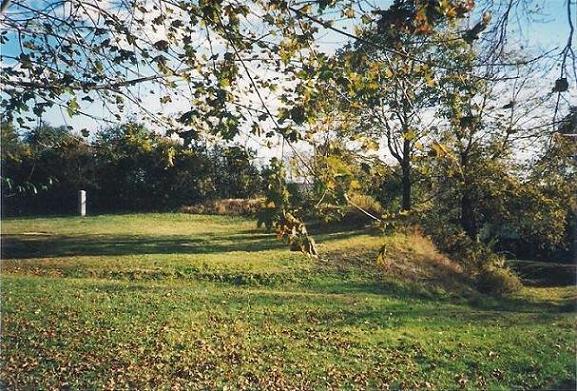
86.46KB
The "Green End Fort" anchored one end of the British earthworks built to protect Newport from land assault.
Feeling angry and left in the lurch, Sullivan continued to advance against Pigot's lines on the south end of the island, but when d'Estang failed to return the Rhode Island militia began to disappear. The Marquis d'Lafayette was sent to Boston to try to talk d'Estang into returning but failed, himself only arriving back near the end of this sorry business. Gen. Nathanael Greene arrived with a few American reinforcements, but it was too late to do much good. Either Greene or LaFayette would probably have been better choices than Sullivan for this command, but Washington was loath to part with the former and the latter was still relatively young and new to the profession of arms to entrust with such responsibility. With his forces dwindling from around 10,000 to half that number, but still outnumbering Pigot, Sullivan settled down for a siege it soon became evident he was unable to maintain. |
report to moderator  |
|
|
James N.
Colonial Militia
   

USA

Bumppo's Patron since [at least]:
October 24 2007
Status: offline
|
 Posted - August 01 2012 : 3:13:31 PM Posted - August 01 2012 : 3:13:31 PM




|
As his militia continued to desert and it became obvious Pigot was preparing to counterattack, by Aug. 27 Sullivan abandoned the siege and retreated back north the way he had come. Pigot's forces caught up with the retreating Americans the following day halfway up the island at Quaker and Turkey Hills.
Image Insert:
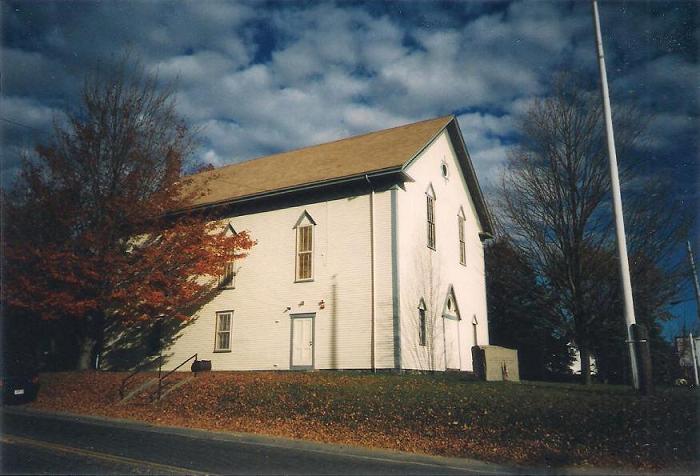
56.03 KB
I THINK this church is the Christian Sabbath Society Meeting House; regardless, it is near the site of the rearguard action at Turkey Hill.
Image Insert:
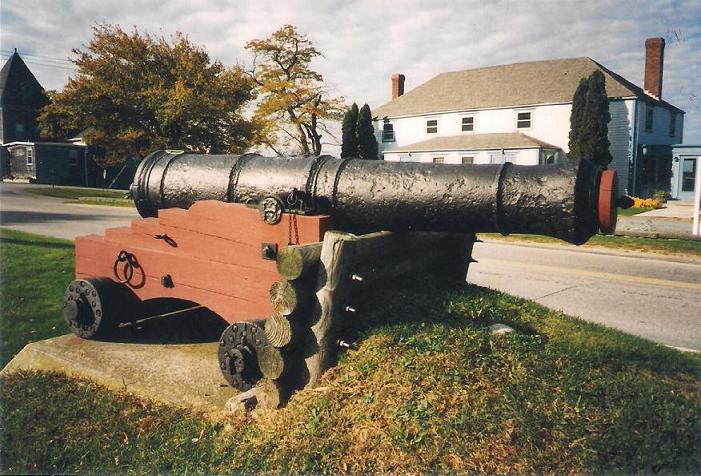
82.18 KB
Image Insert:
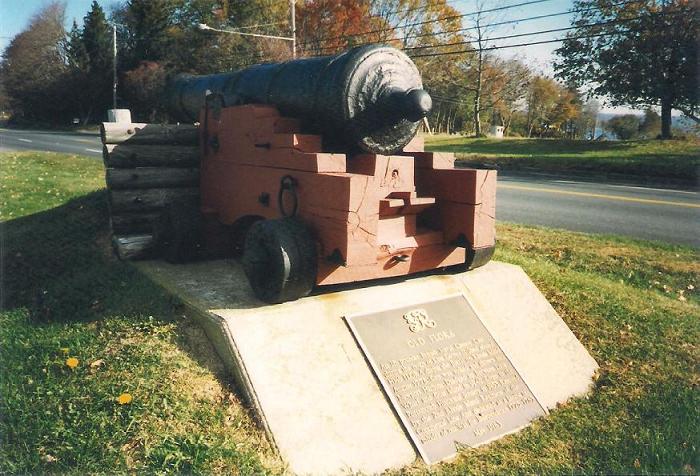
79.66 KB
This British naval 18-pounder sits in a traffic median pointing north toward the final American positions. Named "Old Flora" it supposedly was removed from HMS FLORA for the defense of Newport. Its position here marks the British jump-off point for their final assaults on Sullivan's retreating Americans who continued to defend the fort on Butts Hill Aug. 29, covering the withdrawl.
Image Insert:
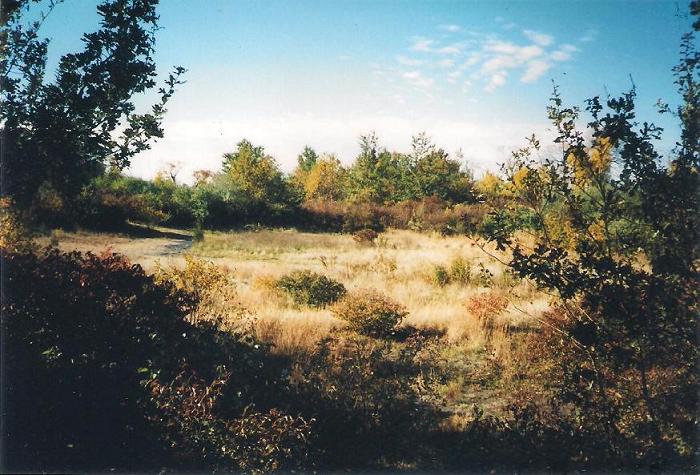
80.76 KB
Image Insert:
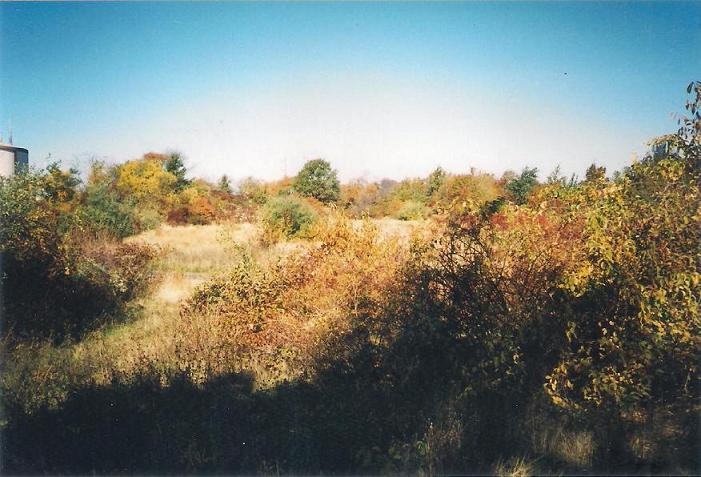
67.26 KB
Overgrown interior of the Butts Hill fort; the tree line in the lower photo marks the line of breastworks. Apparantly this site undergos periodic "rediscovery" by local historians and is cleaned up, only to subsequently be allowed slide back into oblivion. At the time of my visit in 1998, it had been replaced in public consciousness by the then-new small park shown at the top of this thread, dedicated in an act of "political correctness" to the exploits of the mostly-black 1st Rhode Island Regiment. Though their actions are certainly worthy of recognition, the heaviest fighting occurred HERE. Col. John Glover's Mass. Continentals again performed wonders, both repelling British assaults and facillitating the amphibious withdrawl, just in time to elude 4,000 British reenforcements led by Henry Clinton himself who arrived the following day. |
report to moderator  |
|
|
James N.
Colonial Militia
   

USA

Bumppo's Patron since [at least]:
October 24 2007
Status: offline
|
 Posted - August 01 2012 : 3:51:47 PM Posted - August 01 2012 : 3:51:47 PM




|
With Clinton's arrival, life in British-held Newport resumed; but serious strains had been placed on the burgeoning Franco-American alliance. Following another even more serious combined-arms repulse at Savannah, Ga. a year later, d'Estang was finally replaced in 1780 as French commander in the Americas. Ironically, it was back to Newport July 10, that his replacement, Lt. Gen. Jean-Baptiste Donatien de Vimeur, Comte de Rochambeau, led a new French army following a voluntary British withdrawl. Rochambeau and his 5,500 troops fared far better with the New England natives, remaining that winter and into the following year until the start of the campaign that led them first to New York and ultimately Yorktown. Fortunately, the Alliance survived despite its rocky beginnings here at Newport, thanks largely to the cooler heads of Washington and Rochambeau!
Image Insert:
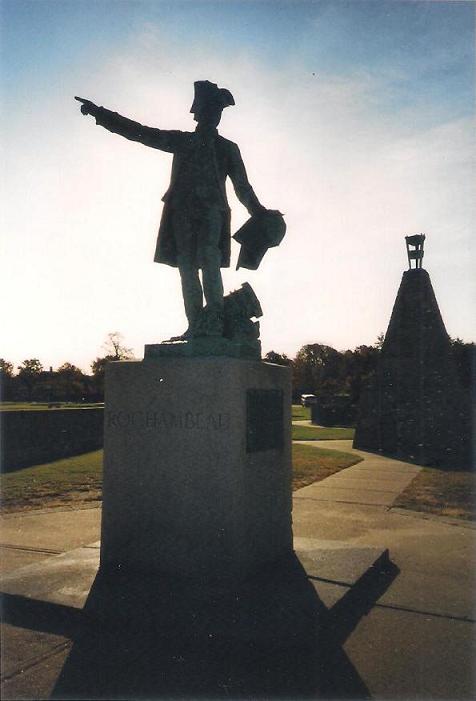
35.47 KB
Monument to the French army ( background ) and Rochambeau statue at Newport Harbor across from the town. An indicator of Newport's continuing importance to early America is nearby Fort Adams, one of the large brick seacoast fortifications erected in the early Nineteenth Century and made obsolete by the rifled cannon of the Civil War.
Image Insert:

41.17 KB
Image Insert:
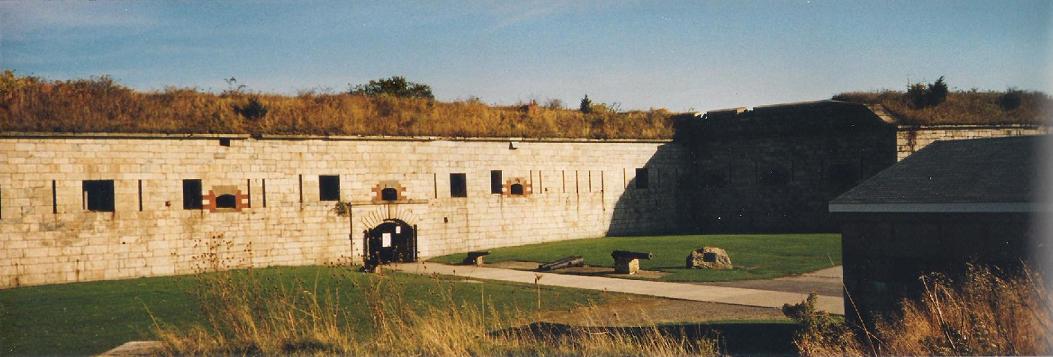
65.34 KB |
report to moderator  |
|
|
richfed
Sachem
    
     

USA

Bumppo's Patron since [at least]:
May 13 2002
Status: offline
Administrator |
|
|
Monadnock Guide
Council of Elders
    
   
USA

Bumppo's Patron since [at least]:
March 14 2005
Status: offline
|
 Posted - August 04 2012 : 8:13:40 PM Posted - August 04 2012 : 8:13:40 PM



|
| Absolutely agree - great pics & narrative. |
you can keep "The Change" |
report to moderator  |
|
|
IWLFNDU
Colonial Settler
  

USA
Bumppo's Patron since [at least]:
May 08 2010
Status: offline
|
 Posted - August 09 2012 : 6:28:17 PM Posted - August 09 2012 : 6:28:17 PM



|
James, do you if that is a grinding stone out in front of the windmill? Is there a reason it is outside rather than inside (for show because the main mill is not open for tours)? Is it original? It just caught my eye....
Great pics and stories! Very interesting!
Image Insert:

77.78KB
Windmill on Conanicut Island.
|
''Only when the last tree has died, the last river has been poisoned, and the last fish has been caught, will we realize that we cannot eat money.''
~ Cree Proverb |
report to moderator  |
|
|
James N.
Colonial Militia
   

USA

Bumppo's Patron since [at least]:
October 24 2007
Status: offline
|
 Posted - August 10 2012 : 8:00:23 PM Posted - August 10 2012 : 8:00:23 PM




|
quote:
Originally posted by IWLFNDU
James, do you if that is a grinding stone out in front of the windmill? Is there a reason it is outside rather than inside (for show because the main mill is not open for tours)? Is it original? It just caught my eye....
Great pics and stories! Very interesting!
IWLFNDU,
Thanks for your comments; I think your speculations are dead on the mark. Unfortunately for me, the times I prefer to travel often come before or after the ridiculously short "season" at many historic sites, which with their cutback funding is regularly now Memorial Day - Labor Day. This WAS closed and I was there about as long as it took me to photograph it; I don't remember any details about it other than where I saw it. I did a little better at many of the other sites on this particular trip like Mystic Seaport, but not the Alden House in Plymouth, Ft. Adams at Newport ( which I only saw and photographed from outside ), or the museum at Ft. Griswold. Fortunately my 2 trusty guidebooks told me most of what I needed to know!
|
report to moderator  |
|
|
lane batot
Colonial Settler
  
USA

Bumppo's Patron since [at least]:
October 15 2011
Status: offline
|
 Posted - September 15 2012 : 08:55:57 AM Posted - September 15 2012 : 08:55:57 AM



|
| James, did you not have the desire to tilt at that windmill at all? I mean, that would do a lot of good, you know...... |
report to moderator  |
|
|
Wilderness Woman
Watcher of the Wood
    
   

USA

Bumppo's Patron since [at least]:
November 27 2002
Status: offline
Donating Member |
 Posted - September 18 2012 : 12:30:00 PM Posted - September 18 2012 : 12:30:00 PM



|
| This is very interesting, James. Although I am fairly well versed on the battles of the Revolution, I was not familiar with this one, certainly one of the lesser known ones. However, it proves once again that Col. John Glover is one of the most unsung heroes of the Revolution. |
"It is more deeply stirring to my blood than any imaginings could possibly have been." |
report to moderator  |
|
| |
 Topic Topic  |
|
|
|
| The Mohican Board! [Bumppo's Redux!] |
© 1997-2025 - Mohican Press |
 |
|
| Current Mohicanland page raised in 0.24 seconds |
 |
|

![The Mohican Board! [Bumppo's Redux!] The Mohican Board! [Bumppo's Redux!]](images/wwwboard.gif)


